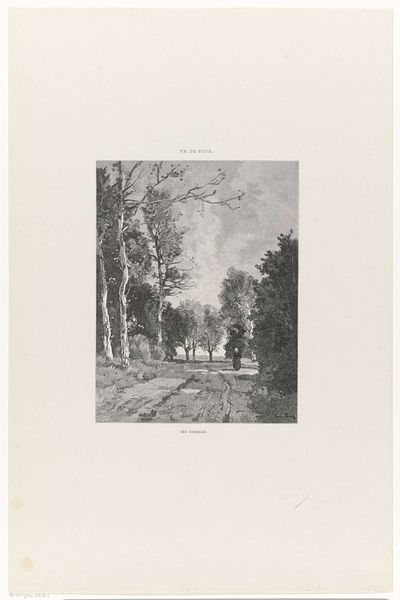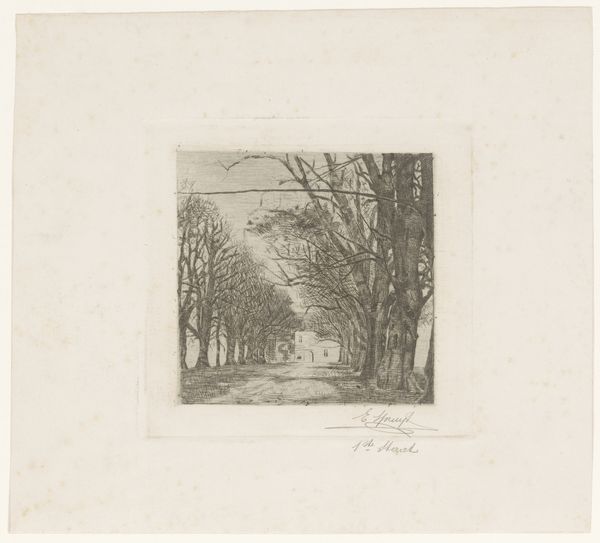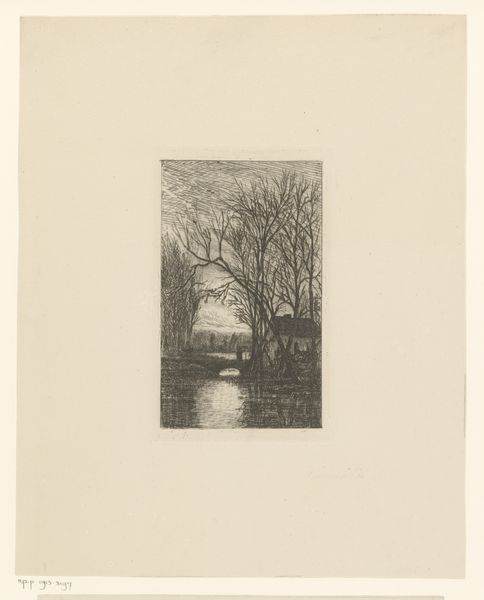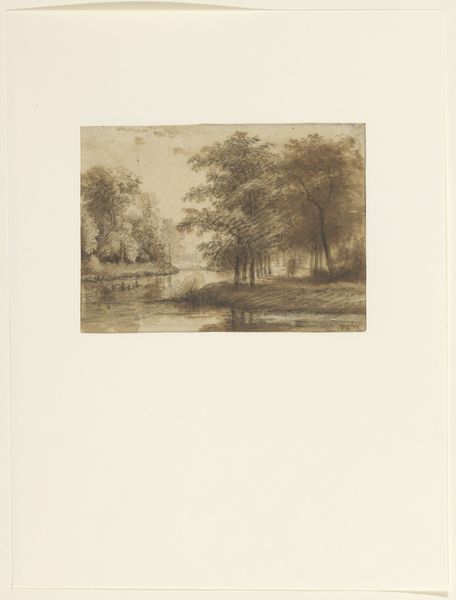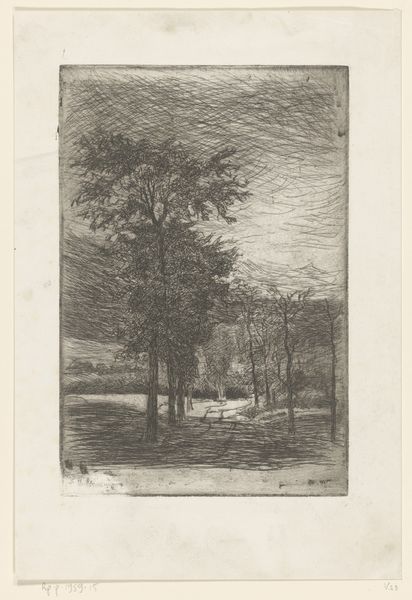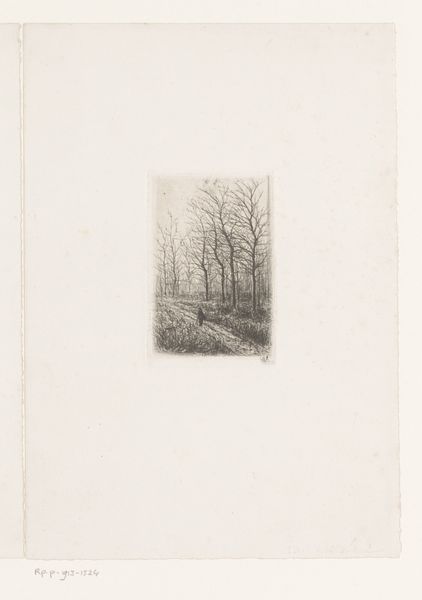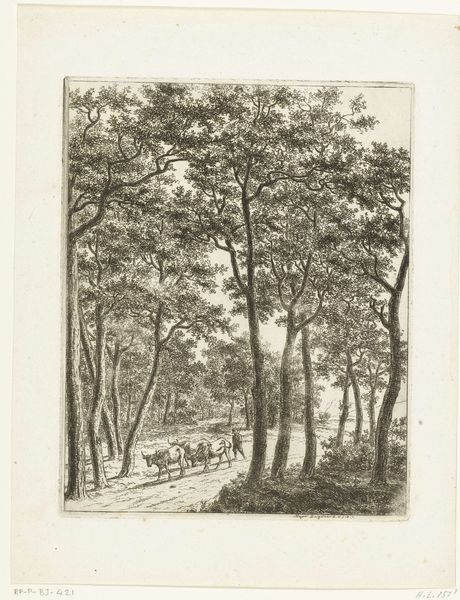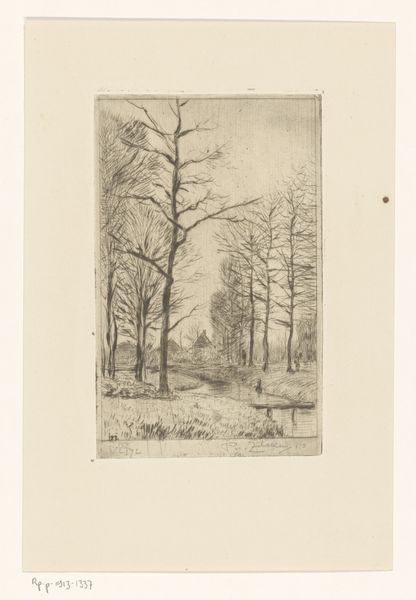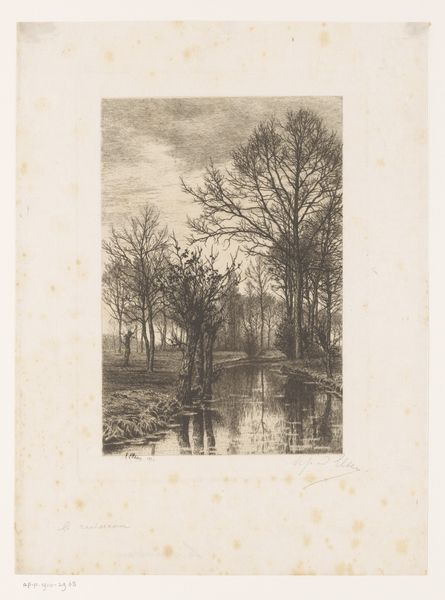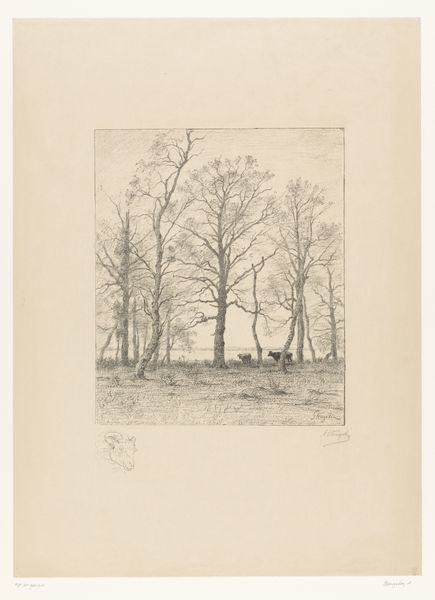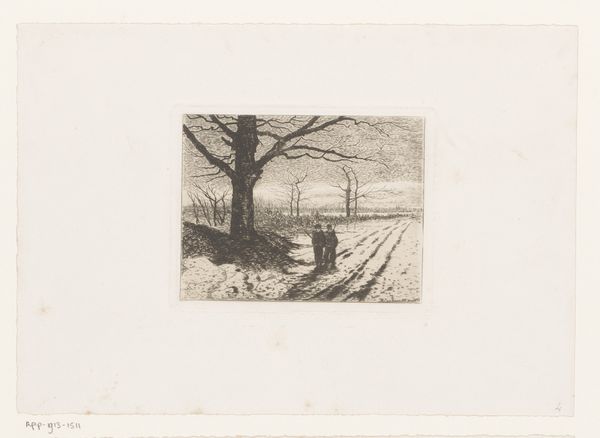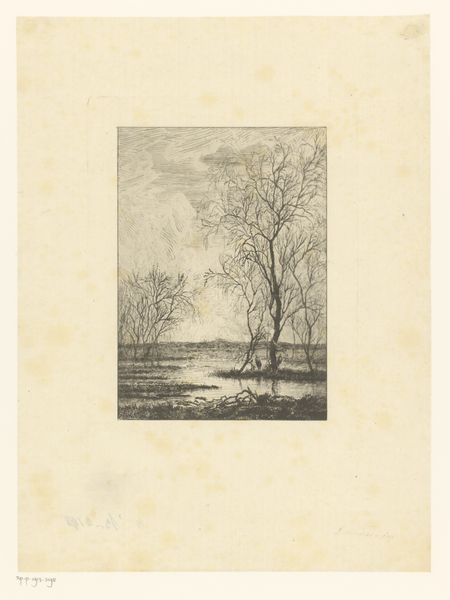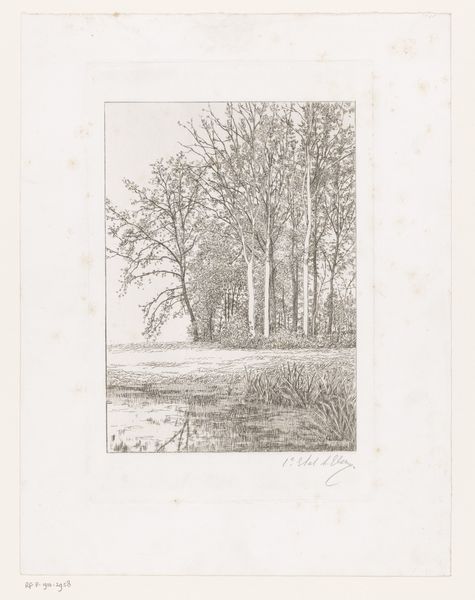
Dimensions: height 503 mm, width 332 mm
Copyright: Rijks Museum: Open Domain
Curator: This is “'s Winters buiten,” or "Winter's Outside," an etching made between 1869 and 1904, by Arnoldus Cornelius Verhees. It resides here at the Rijksmuseum. The scene depicts a snow-covered landscape with a canal or small river running through it. Editor: There's a beautiful, quiet stillness to it. The stark contrast of the dark lines against the white paper really emphasizes the winter atmosphere, the cold clarity. The lines seem so delicate, yet the scene feels solid, sturdy, very… Dutch. Curator: It is quite characteristic of the Dutch Romantic movement in its reverence for the landscape, while leaning also into Realism by representing a very tangible place and season. These prints were often created for a growing middle class, keen to collect images and consume culture within their own homes. Editor: It makes me wonder about the physical process of creating the print. I imagine Verhees carefully coating a metal plate, drawing his design through the waxy surface, and then immersing the plate in acid. The act of producing multiple images speaks to the wider social consumption, wouldn’t you agree? Curator: Absolutely. And it's important to remember the social context; such scenes affirmed Dutch identity during a period of national self-reflection, offering idealized but accessible representations of their homeland and reinforcing notions of natural beauty under human touch. Editor: Looking at the composition, the eye is guided by the dark water reflecting light to the distant buildings. It feels a bit idealized, considering the toil involved in such winter conditions; nonetheless, I admire how Verhees manipulated his materials to capture the shimmering quality of light on ice and snow. Curator: Consider how the Rijksmuseum itself plays a role in elevating this artwork to a cultural touchstone. Institutions such as this shape our perception and the historical record, often defining which artists are canonized. It also invites a wider discussion about landscape in art and its place in forging the cultural identity. Editor: The ability of printmaking to disseminate images and the tactile qualities of etching combine here to present nature in an immediately accessible manner. In a way, it invites a personal connection with the Dutch landscape of the time, wouldn't you say? Curator: Precisely. Hopefully our brief conversation illuminates not just Verhees’ work but also the ongoing dialogues museums facilitate about history, technique, and culture itself. Editor: Yes, by exploring the tangible aspects of this image, the craft, the history and what that might suggest about its deeper symbolic relevance for our appreciation of art and production as a whole.
Comments
No comments
Be the first to comment and join the conversation on the ultimate creative platform.
